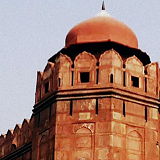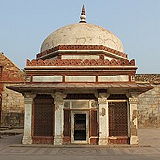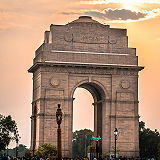
|
Red Fort Delhi, India Last Updated: 05/17/2024 |
|
The Red Fort, also known as Lal Qila, is a historic fort located in Old Delhi, India. It is one of the most iconic landmarks in the country and holds significant historical and cultural importance. Chhatta Chowk is a covered bazaar located inside the fort complex. It used to be a market where royal artisans and traders would sell their goods to the imperial household. | |
| - Construction: The Red Fort was built during the 17th century by the fifth Mughal Emperor, Shah Jahan. The construction of the fort began in 1638, and it was completed in 1648. The fort served as the main residence of the Mughal emperors for nearly 200 years. - Architectural Style: The Red Fort is an exemplary piece of Mughal architecture, characterized by its red sandstone walls and a blend of Persian, Timurid, and Indian architectural styles. The fort's design reflects the grandeur and opulence of the Mughal era. - Layout and Design: The fort is rectangular in shape and is surrounded by walls that stretch for about 2.5 kilometers. The fort complex is divided into several sections, including the Diwan-i-Aam (Hall of Public Audience), Diwan-i-Khas (Hall of Private Audience), Nahr-i-Bihisht (Stream of Paradise), and the Rang Mahal (Palace of Colors), among others. - Pearl Mosque: The fort houses the Moti Masjid or Pearl Mosque, which is a small, elegant mosque constructed with white marble. It was added to the fort by Emperor Aurangzeb. - Independence Day Celebrations: The Red Fort is closely associated with India's independence struggle. It is where Jawaharlal Nehru, the first Prime Minister of India, raised the national flag on August 15, 1947, marking India's independence from British rule. Since then, the Red Fort has been the site of the annual Independence Day celebrations. - UNESCO World Heritage Site: The Red Fort was designated as a UNESCO World Heritage Site in 2007, recognizing its cultural and historical significance. - Sound and Light Show: Visitors to the Red Fort can enjoy a sound and light show in the evenings that narrates the history of the fort and its connection to Indian history. The Red Fort stands as a symbol of India's rich cultural heritage and is a popular tourist destination, drawing visitors from around the world to explore its architectural beauty and learn about its historical significance. | |
Wikipedia
India » Delhi
Place » Historical Place

|
Gurudwara Sis Ganj Sahib Place » Historical Place Gurudwara Sis Ganj Sahib is one of the most revered Sikh shrines in New Delhi, Delhi, India, and holds immense historical and religious significance. Located in the bustling area of Chandni Chowk in Old Delhi, it stands as a symbol of Sikh martyrdom and faith. 13 views 💖 1Chandni Chowk, New Delhi, Delhi, India |

|
Qutb Minar Complex Place » Historical Place The Qutb Minar complex is a historical site located in Delhi, India. It is renowned for its architectural and cultural significance, and it is one of the most prominent examples of early Indo-Islamic architecture. The Qutb Minar is the main structure in the complex. It is a towering minaret that stands at a height of 73 meters (240 feet). 31 views 💖 1Quwatul Islam Mosque, Seth Sarai, Mehrauli, New Delhi, Delhi 110030, India |

|
New Delhi, India Place » City New Delhi is the capital city of India. It is located in the northern part of India, in the Delhi National Capital Territory. It is bordered by the state of Haryana on three sides and by Uttar Pradesh to the east. Its population was 249,998 in 2021. 62 views 💖 1India |
